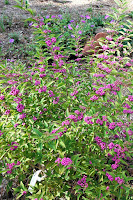 |
| Dorothy Jasiecki, circa 1967 |
This weekend I will make a
pilgrimage to a place that will always hold a special meaning to me, and to see
people I came to know in the first two decades of my life. It’s my 50th high school
reunion. Interestingly, I suspect the
people with whom I’ll spend the most time will have a common denominator: a
teacher named Dorothy Jasiecki.
 |
| Me in 1967. The less said, the better |
I am by trade a writer, and
I say that with pride. For 35 years, I plied a very different craft
that occasionally required me to put words to paper, but which I can say with
complete honesty never gave me anything like the personal and professional
satisfaction I have felt for the past twelve years. The reason this
blog exists is because writers, like (for example) pianists, need to
practice. Just as a pianist does not sit down at a concert grand and
begin playing ‘The Appassionata’, so a writer does not go to his or her
keyboard and begin writing that Great American Novel. The pianist
begins with ‘etudes’ – literally, study pieces - that stretch the fingers and
make the mind warm up.
This blog is my equivalent
of an etude. It is about gardening because I am married to a
virtuoso gardener and I am her helper, and also because writing about gardening
is considerably more interesting than opining about, say, politics or
wine. Each entry is as carefully thought through as a short story
and is polished to fit within a prescribed length.
 |
| Me, earlier this month. The less said the better |
I am a writer because, from
September 1964 until June 1967, Dorothy Jasiecki taught me to love language,
literature and words. She had been recruited by a young principal
named John M. Jenkins to teach at a spanking new school, Miami Springs Senior
High School. I was in one of her classes that first year strictly by
happenstance. The following two years, she was my English teacher by
design.
Miss Jasiecki (the notion
of calling teachers by anything other than ‘Mister’, ‘Miss’ or ‘Mrs.’ lay many
years in the future) created and followed a lesson plan that ensured we read
and mastered the material that would appear on tests. What made her
so extraordinary was how she conveyed that information and that she demanded we
go far beyond what was required by the Dade County Board of Public
Instruction. She effectively had a second syllabus, one of her own
devising, that was intended to stretch – and open - our minds.
 |
| Our reading list was designed to stretch the mind |
Part of her methodology was
to reach deep into her own knowledge of literature to awaken our own
senses. She spent much of one class session reading Beowulf in
a way that I felt I was gathered around a hearth fire, listening to oral
tradition being made. We delved into poetry far beyond Emily
Dickinson or Robert Frost and spent several days dissecting The
Wasteland and The Love Song of J. Alfred Prufrock; titles
that almost certainly were not sanctioned by the bureaucrats at Lindsey
Hopkins.
The balance of her teaching
style was to challenge us to think about what we were reading. To be
in her class meant you came to school prepared, and ‘prepared’ meant you had
not only read the assigned book but that you had understood it. And
God forbid you came into class spouting something from Cliff’s Notes. (I
tried that once and was found out almost immediately.)
All of this was leavened
with philosophy and humor. The final five minutes of class could
comprise a discourse on the importance of shaking hands or a treatise on
elbows. These ‘sermonettes’ as we called them stretched us further
still, if for no other reason than because we had no idea of what was coming
next.
Miss Jasiecki was a tough
grader. I made very few ‘A’s’ in her class. But I tried
harder than I did in any other subject both because she expected it and I knew
it pleased her.
She was recognized for her
skills. Florida named her a ‘Star Teacher’ and sent her on a
statewide tour with a similarly high achieving student from my
class. My great hope is that she inspired other educators as much as
she inspired us.
 |
| At the 2007 reunion with Ms. J. That's classmate Jane Greer at right |
I last saw Miss Jasiecki
ten years ago at my 40th reunion and spent much of one evening doing
nothing but listening to her reminisce about her years in the classroom. Time had taken its toll on her body, though
not on her mind. It turns out that her best memories were of her
first years at Miami Springs and at her predecessor school, Norland High.
She passed away in
2015. Were she alive, she would have
turned 92 today. And, in an important
sense, Dorothy Jasiecki is still very much alive in 2017. She touched thousands of lives and, for a
certain number of them (including mine), she left an indelible impression that
transcends time. She still looks over my
shoulder as I write; ‘tsking’ at lax grammar and use of ‘easy’ adjectives.
 |
| Ms. J circa 2015 |
We did not all become
writers or poets. We went into computer science, sales, engineering
or education; we raised families or went into the military. But we
all learned how to think and, regardless of future occupation,
that skill made us better individuals.
Principal Jenkins attracted
a pool of talent in those first years that made Miami Springs a school unlike
any other. I had many teachers – Jack Gonzalez, Agustin Ramirez, and
Phil Giberson come immediately to mind – who were outstanding and committed to
quality education. But I can draw a direct line back to Dorothy
Jasiecki and say, without hesitation, that she was the teacher who most
inspired me. I would not be the person I am today were it not for
her.
Happy birthday, Dorothy
Jasiecki, and thank you for being the teacher you were, and the inspiration you
still are.














